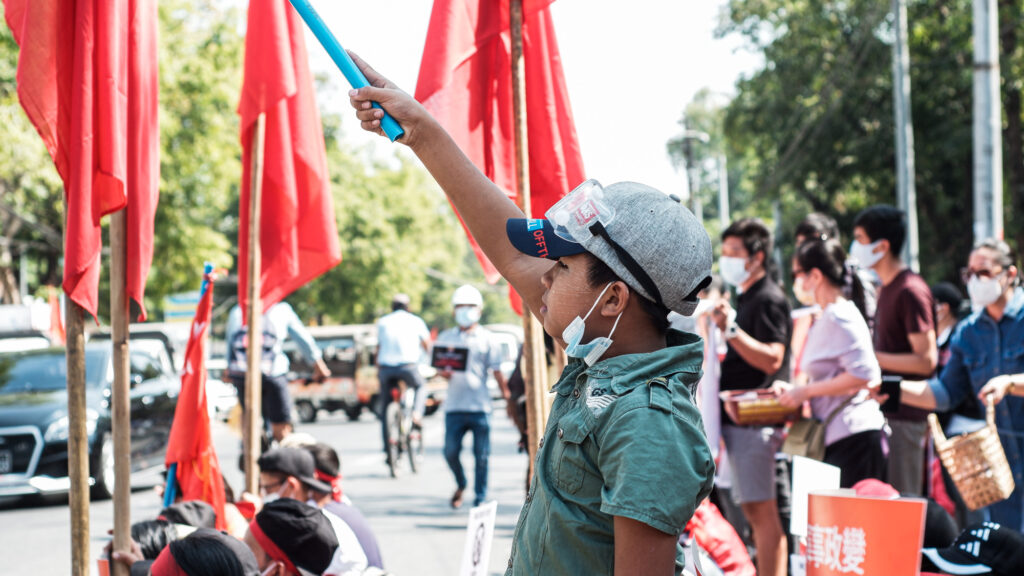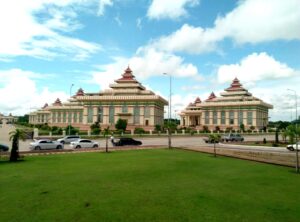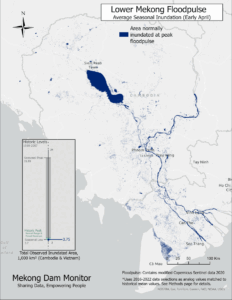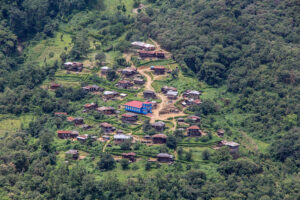A prominent analyst of Burma’s insurgency, Martin Smith, once observed that “in a country as ethnically diverse and politically divided as Burma, the theory of the united front has dominated the thinking of insurgent leaders on all sides.” Starting with the People’s Democratic Front, a united front of leftist rebel groups established in March 1949, the prolonged Burmese civil war has featured a shifting series of political and military alliances amongst a variety of rebel forces. Throughout decades of armed struggle, many alliances and united fronts have cyclically been formed, shifted, faded out, and reconfigured, but none has been effective and strong enough to win against their common enemy, the Burmese military.
The current armed resistance movement, which coalesced after the 2021 military coup and the junta’s brutal crackdown on nonviolent protests, followed the tradition of Burmese rebel politics by envisaging a broad and inclusive alliance between anti-junta democratic forces and ethnic armed groups. In the early phase of the resistance movement, there was a strong public expectation of the creation of a federal army merging various ethnic armed groups opposed to the regime. Yet, in hindsight, the complicated conflict landscape of Burma precluded the incorporation of a plethora of armed groups into a single army in a short span of time.
Instead of unrealistically hoping for a federal army, military cooperation between newly formed armed groups associated with the Spring Revolution, known as the People’s Defense Forces (PDFs), and older, well-established ethnic rebel groups, is a more realistic prospect. With the strong support of sympathetic ethnic armed organizations (EAOs), the post-coup armed rebellion has gained momentum, transforming from spontaneous, decentralized, semi-networked attacks into a better organized armed movement capable of collaborating on joint offensives.
Despite progress on military cooperation on the ground, alliance politics in the resistance movement are still fluid and unstable. Since the onset of the resistance, the anti-junta forces have been seeking a political agreement that can bring together assorted groups with diverse interests and agendas. Intra-resistance dialogue produced the Federal Democratic Charter (FDC) and is now in the process of deliberating a transitional constitution to replace the 2008 one. Yet, these documents need buy-in from all groups, primarily the powerful EAOs, which are still reluctant to fully commit to any postwar political arrangement with the Bamar-dominated National Unity Government without having a concrete result on the battlefield.
The quest for a detailed and inclusive political agreement that can accommodate all of the aspirations of historically divided groups is a tall order. A viable alternative is a model of gradual negotiation for political arrangements through military cooperation on the ground. Resistance forces should focus on effectively increasing current military cooperation and coordination, and then engage in a series of negotiations for the foundational principles and visions for the postwar Burma, based upon the growing trust and understanding gained through the military cooperation. As the political agreement amongst the anti-junta forces is the only viable path to the founding of a future federal democratic country, the international community needs to actively support the cooperation and dialogue process.
The Quest for a Federal Army
In late March 2021, over a month after the coup, Dr. Sa Sa, then the international envoy of the Committee Representing Pyidaungsu Hluttaw, said that, “Having a federal army becomes a must and it’s the way we achieve democracy and freedom.” It was reflective of the high expectations of people pushed beyond the edge combined with the unrealistic, hopeful atmosphere of the early revolution. When anti-junta armed resistance started popping up in predominantly Bamar areas, the powerful ethnic armed groups such as the Kachin Independence Army (KIA) and Karen National Liberation Army (KNLA) demonstrated their solidarity with the people by attacking nearby military outposts.
The early progress in the anti-junta movement reinforced public hope for the establishment of a federal army integrating existing armed organizations. Less aware of the complicated dynamics of the protracted insurgency, the public and even the leading figures of the resistance believed that forming a monolithic federal army would be possible in the rising tide of anti-military sentiment.
But, in reality, the dynamics of Burma’s prolonged armed conflict proved intractable. The political space remains complicated and divided geographically, historically, politically, and ethnically. Each armed group diverges in terms of interests, objectives, and visions. Moreover, the ethnic armed groups historically have a shallow reserve of trust towards the Burmese pro-democratic forces. Padoh Saw Taw Nee, head of foreign affairs for the Karen National Union (KNU) thus said, “We already have armed groups who have their own armies, but it’s very difficult to work together, to have coordination. Ethnic coordination is very, very difficult from the north to the south. They are different in their ideas, their thinking, their nature and history, as well as geographically.”
The history of Burma’s civil war has demonstrated the repeated failure of coordination between rebel groups, worse between ethnic armed groups and Bamar rebels. Despite the optimism about the emergence of a federal army amongst the public, the quest for a federal army was neither easy nor practical, so leaders of the resistance movement have to find a viable alternative.
The realistic path is that the National Unity Government (NUG) forms its own armed group and undertakes military cooperation with the well-established EAOs against the military while gradually proceeding with the goal of forming a future federal army through negotiation and building trust. To this end, the NUG formally launched the People’s Defense Forces (PDFs) on May 5, 2021, with the strong support of some EAOs. The NUG maintains that the PDFs are a precursor to establishing a Federal Union Army, and its aim is possibly to make the PDF its military wing, which will be merged with a plethora of ethnic armed groups into the future federal army. In this way, the PDF emerged as a new type of security actor in post-coup Burma.
In fact, the armed resistance movement started as localized fights against the junta’s troops before the NUG’s official formation of the PDFs. Since early March 2021, a month after the coup and aware that non-violent protests could not reverse the coup, young protestors snuck out to EAO-controlled areas to obtain military training and form local defense forces. The NUG had to draw on members of those locally organized armed outfits as well as EAO-trained youth for the recruitment of the PDFs. Instead of pursuing an ambitious dream of forming a federal army, the pro-democratic forces implemented the most realistic means to form their own army and conduct military coordination with the existing EAOs. The NUG relies on support from sympathetic EAOs, including the KIA and KNU, to form, train, and equip the newly formed PDFs.
Military Cooperation and Coordination
Along with forming the PDFs, the NUG began mapping out areas for Regional Military Commands (RMCs) across the country. The NUG created the preparatory committee to prepare, organize, and form RMCs, and according to the NUG’s original mapping, there were five RMCs: the Northern RMC comprising of Kachin and northern Shan States, Sagaing Region and some areas in Mandalay Region, the Western RMC of Chin State and some areas in Magway Region, the Central RMC of Naypyitaw, some areas in Mandalay, Magway, and Bago Regions, and Karenni and southern Shan States, the Eastern RMC of eastern and central Shan States, and the Southern RMC of Ayeyarwady, Yangon, and Tanintharyi Regions, some areas in Bago Region, and Karen and Mon States.
While preparing to form these regional military commands, the NUG engaged in negotiations with the EAOs supporting the anti-junta movement. As it achieved some sort of agreement with the EAOs for cooperation, the five regional military commands were modified into three Military Divisional Commands (MDCs): the northern and western RMCs were merged into No. 1 MDC, the Eastern and Central RMCs into No. 3 MDC, and the Southern RMC became the No. 2 MDC. As these RMCs emerged out of agreements with the EAOs, the cooperative ethnic armed outfits have become actively involved in operations of the MDCs. After the NUG officially declared a people’s defensive war in September 2021, fighting intensified in areas under the purview of the MDCs.
The NUG next strengthened cooperation with the EAOs, by forming centralized military command structures jointly led by the NUG and its allied ethnic armed groups. In October 2021, it announced the formation of the Central Command and Coordination Committee (C3C) including the NUG, KIA, Karenni National Progressive Party (KNPP), Chin National Front (CNF), and All Burma Students’ Democratic Front (ABSDF). The NUG also formed another command structure, the Joint Command and Coordination (J2C), with the KNU, which is not a member of the C3C. The Security and Defense Committee of the NUG created the Alliance Relations Committee, which is primarily responsible for outreach to the EAOs and expanding alliances amongst the resistance groups. The Alliance Relations Committee has primarily worked to obtain better cooperation, through increased interactions, with ethnic resistance organizations (EROs)—mostly non-allied ones.
To institutionalize the current military cooperation, the NUG is attempting to establish a war office whose primary responsibility is to strategically, logistically, and materially assist the military operations undertaken by command structures. In this way, the war office could potentially play a coordinating role across the command structures. If the war office can be properly developed based on the necessity on the ground, it could enhance the military cooperation across the country.
Alliance Politics amongst the Anti-Junta Forces
Although military cooperation between the PDFs and the EAOs has improved through these nascent command structures, there has been no substantial political arrangement that all key actors in the movement have accepted and committed to as of yet. The National Unity Consultative Council (NUCC), the intra-resistance political dialogue platform, published the Federal Democratic Charter (FDC), a political framework that envisages the building of a future federal democratic country. Although it can serve “as a basis for building a strong, broad and inclusive alliance” across the pro-democratic forces led by the NUG and long-established EAOs fighting for greater autonomy and self-determination, some key stakeholders are still reluctant to demonstrate a full commitment to a binding document in the warring period.
A big setback for the NUCC and the FDC is that the KIA and National League for Democracy (NLD), the winning political party in the 2020 elections, withdrew their participation from the NUCC. For powerful actors who have already agreed to fight against the military dictatorship, a premature commitment to a post-war political arrangement without having any concrete result on the battlefield is similar to putting the cart before the horse. In wartime, they apparently prefer to focus on fighting their common enemy, the military, instead of being themselves straitjacketed by future commitments.
Alliance formation is naturally unstable and fluid during a multi-party civil war. Fotini Christia observed that, “of the fifty-three multiparty civil wars, forty-five (85 percent) experienced at least one alliance change during their course, and twenty-seven (51 percent) experienced three or more alliance shifts during their course.” Burma’s longstanding civil war has experienced many failed alliances across its plethora of rebel groups, many of which had undergone the cycle of formation, change, realignment, and breakup. Starting with the People’s Democratic Front in 1949, there have been no less than sixteen military and political alliances formed amongst the rebel groups, none of which was successful enough to prevail over the Burmese military.
These alliances have produced a series of political agreements and joint statements of vision that can serve as a foundation for alliance formation, but none have been able to bind together participating groups long enough to achieve the alliance’s objective. Almost all those statements and agreements are generally reflective of each participant’s visions and guiding principles, but, in reality, groups rarely commit to those documents for a long time. Power considerations seemed, as Fotini Christia argues, to be a key motive for the elites of the warring parties to pick their allies in Burma’s civil war. As armed groups naturally struggle with matters of life and death, they usually prefer their survival to intangible principles and visions while facing an existential threat. Without having a strong power on the ground, the value-based statements and agreements have rarely guaranteed the sustainability of alliance.
The Way Forward
The NUG’s acting president Duwa Lashi La recently said that the door was not closed to negotiations, but it must be based on five preconditions; 1) the military must stop killing civilians just as in the ASEAN proposal, 2) it must guarantee the absolute withdrawal from politics, 3) it must agree not to interfere with the international aid for citizens who are suffering, 4) it must accept the abolishment of the 2008 constitution that is contradictory to democracy, and 5) it must accept an international mediator to strengthen these points. However, the military generals, who know only the language of force, will not easily come to the negotiation table and not accept the precondition points, if the resistance movement does not have a strong political and military leverage on it. Only a militarily cooperative and politically cohesive resistance movement can bring about the necessary leverages for negotiations.
The quest for overarching principles and a political vision around which all resistance forces could coalesce is crucial for the advancement of the resistance movement and future state-building. Yet, overemphasis on the detailed and inclusive political agreement could possibly create setbacks and exacerbate the currently shaky relations between the groups, which are still trying to overcome deep-seated mistrust. Although the junta’s violence encourages military cooperation amongst the anti-junta forces on the ground, it is obvious that some are still reluctant to demonstrate or fully commit to a political dialogue platform and a shared charter. Amidst the current developments, the resistance movement should undertake the model of gradual negotiation for political arrangements through increased military cooperation on the ground.
To sustain the military cooperation on the ground, all anti-junta resistance forces need to quickly find ways to build up a robust coordination system between the existing command structures. The NUG and all its allied EAOs should negotiate and agree to set up a comprehensive coordination system, that will primarily work together the existing C3C and J2C and possible future military alliances on the strategic level. Through such military cooperation and coordination, the pro-democracy resistance forces led by the NUG and the EAOs need to build trust and move on to the next step of political negotiation for foundational principles and visions for the postwar Burma. In the current situation, only a strong military power built up through military cooperation and coordination can assure the sustainability of revolutionary alliances which are able to bring the country out of the current quagmire.
The international community, particularly neighboring countries, should be well aware that the credible path to stability and peace for future Burma can go through the resistance movement, not from the junta’s proposed 2023 sham elections, which will only trigger greater violence and instability. However, it should be noted that expectation of perfect unity across the resistance forces, plagued by factional politics, historical grievances, and mistrust, is not realistic. The most realistic and feasible pathway for the resistance movement is the sequencing of military cooperation and coordination, building trust and political negotiation. The movement is currently on the right track for advancing this sequence. The international community therefore should engage more with the resistance movement and support their efforts to building a stable and peaceful future for Burma.
Peter Kropotkin once said, “the hopeless don’t revolt, because the revolution is an act of hope.” Over the twenty-three months after the coup, the public resistance movement has not shown even the slightest sign of losing momentum, and people are determinedly hopeful of the future of Burma, free from the yoke of deep-seated military dictatorship. The international community must help the Burmese people in their herculean task of transforming their hope into a reality.




